Bluebell Steam Railway, Sussex, UK
September 26, 2009
By Peter Limper
| On September 26, 2009, I spent a delightful day on the steam-operated Bluebell Railway in Sussex, England, about 30 miles south of London. |
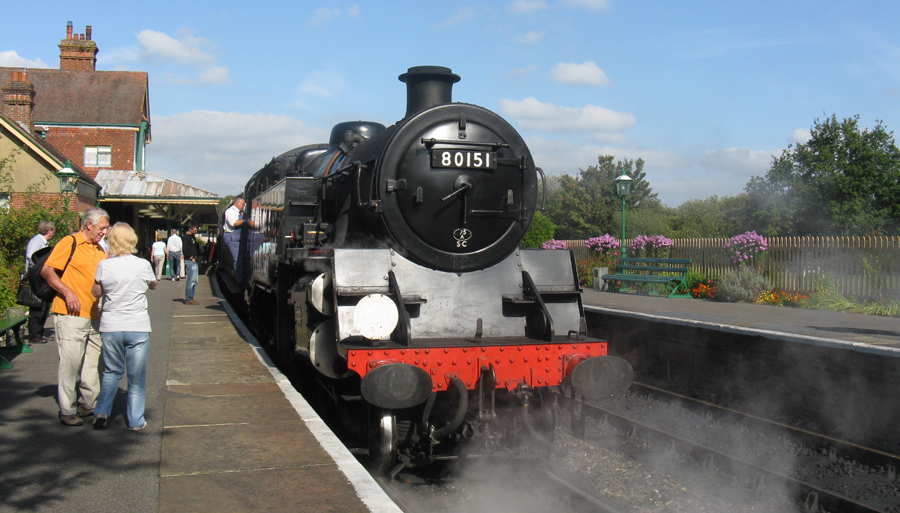 |
The Bluebell Ry. is the oldest standard-gauge preserved railway in
England, dating from 1960. Though currently only 9 miles long it has
three authentic stations, a collection of about 30 steam locomotives (of
which 6 are now in operation), and a large roster of period passenger
equipment. For more details see their website:
www.bluebell-railway.co.uk/bluebell/bluebell.html |
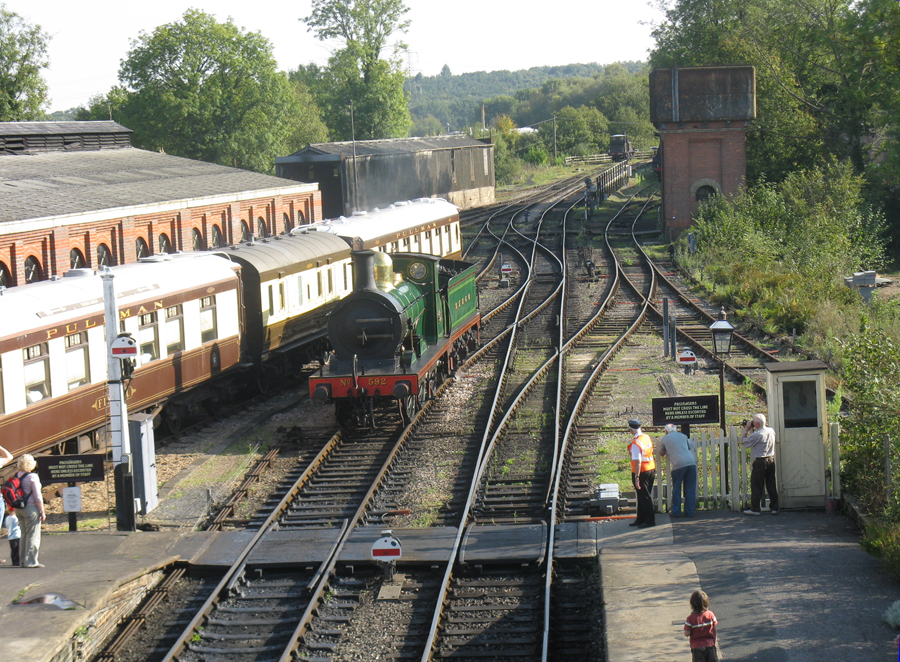 |
I reached the railway from London Victoria via a local service on a former
Southern Railway line with third-rail electrification, followed by a short
bus ride. |
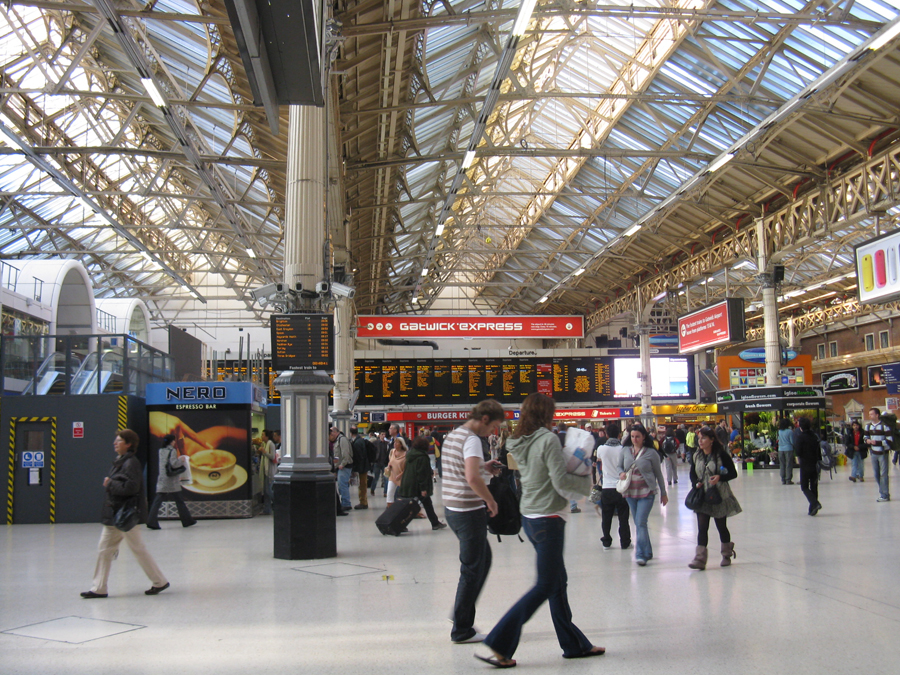 |
I boarded my first train at the Kingscote station, the current northern
terminus of the line. A two-mile extension to East Grinstead (beyond the
tower) will open soon, giving a direct connection to the British Rail
passenger network. |
 |
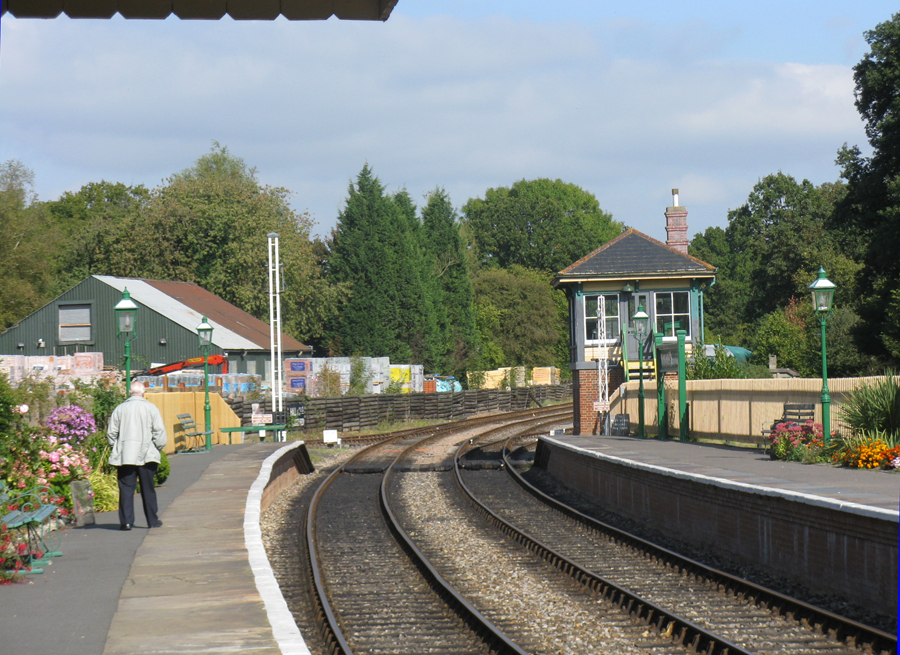 |
The train was pulled by the newest locomotive on the railway, British Rail Standard 2-6-4T # 80151, built in 1956. |
 |
Most of the train was made up of relatively modern carriages built in
the 1950s. |
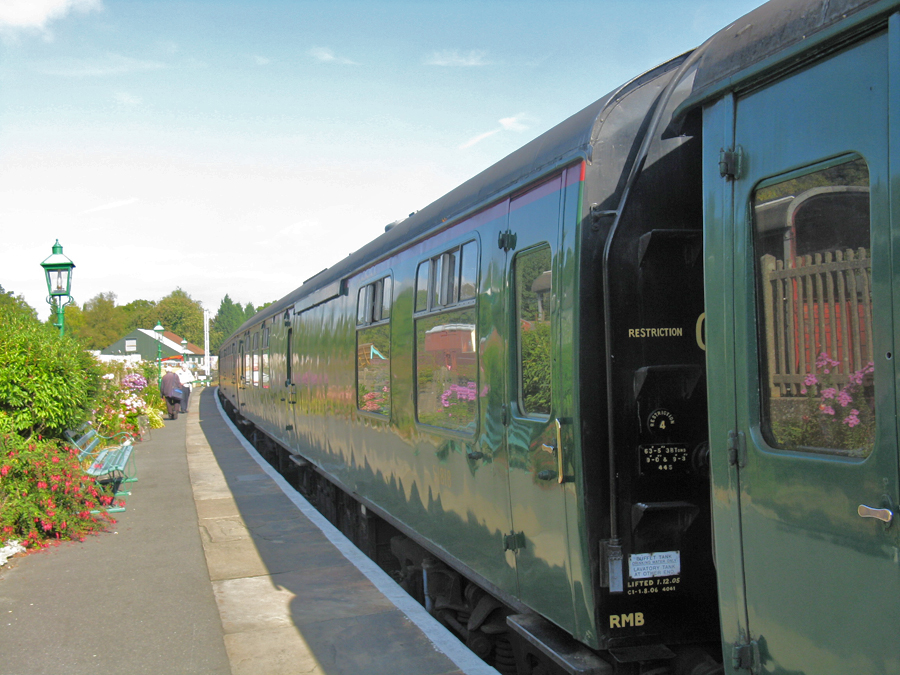 |
The consist also included first-class compartment car 7598, dating from 1903.
|
 |
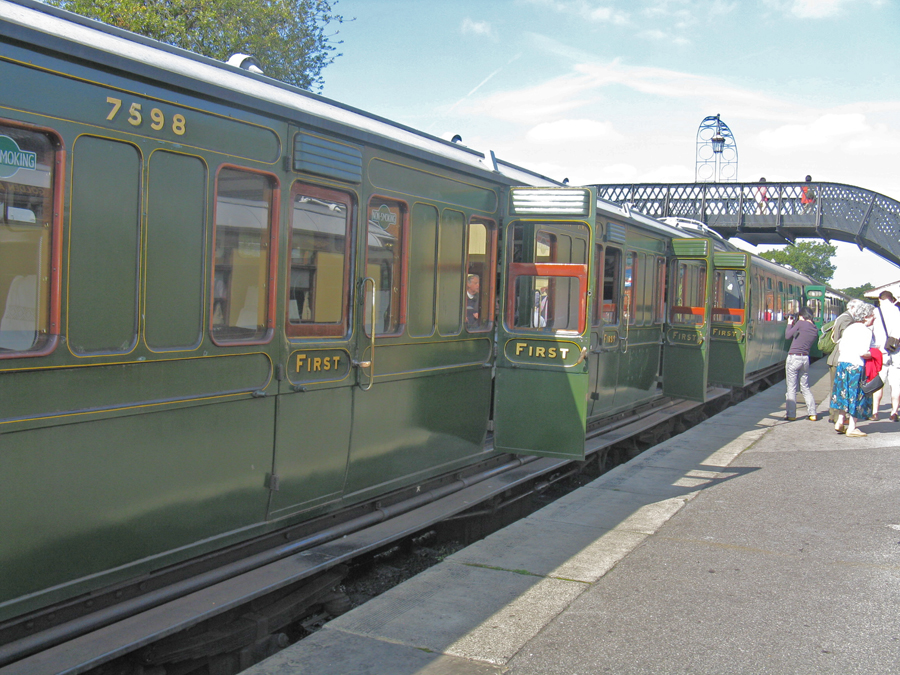 |
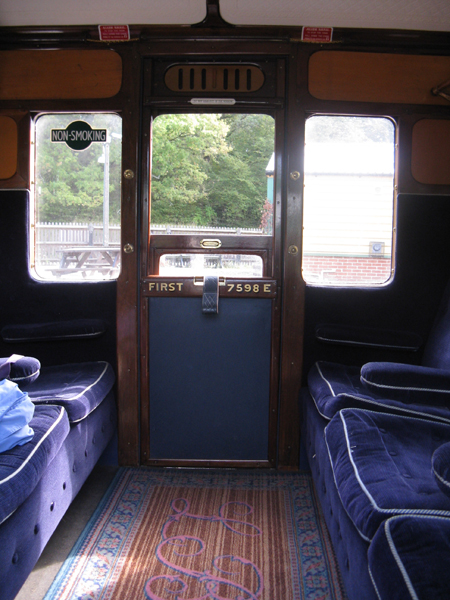 |
The line runs through the lovely rolling hills of Sussex. |
 |
At Horsted Keynes, the middle station on the line, the train paused for a
meet with a train pulled by #592. |
 |
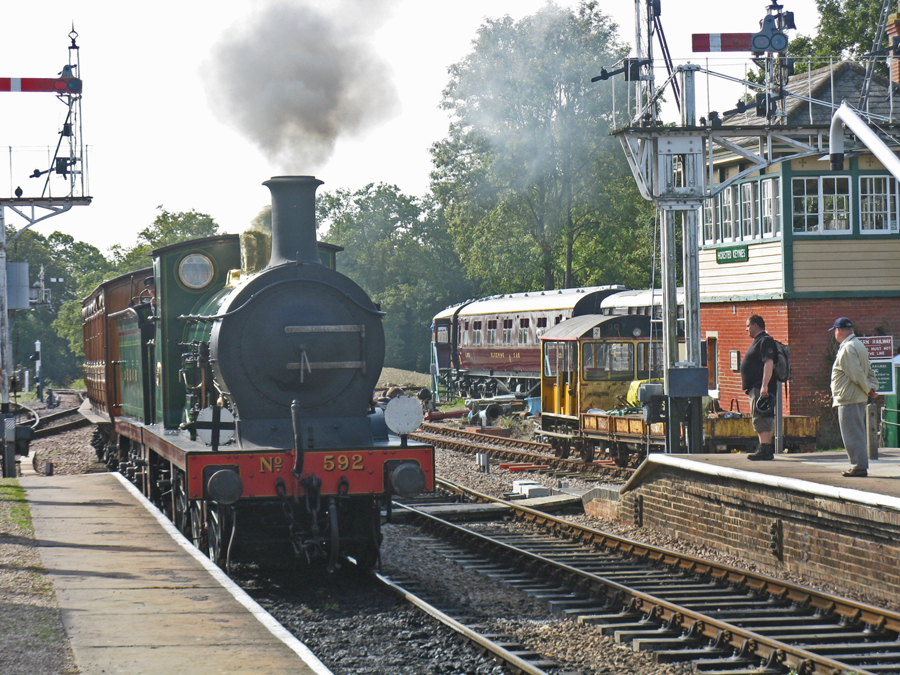 |
Horsted Keynes is the location of the Bluebells passenger carriage repair
and storage facility. Among other cars, I saw this unique 1913
observation car and some true 19th Century varnish. |
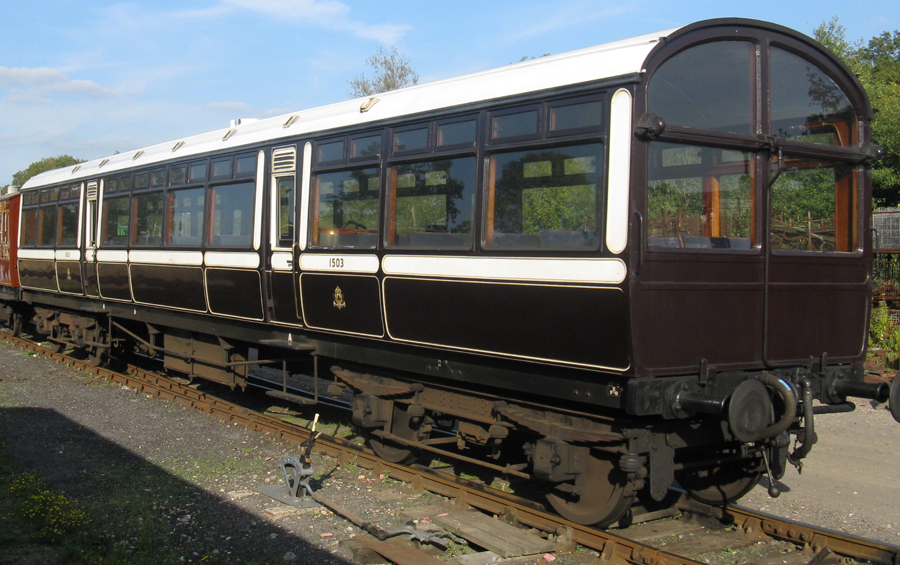 |
 |
Sheffield Park is the southern terminus and headquarters of the railway.
Here I enjoyed a lunch of steak and kidney pie washed down with real
English pulled ale. |
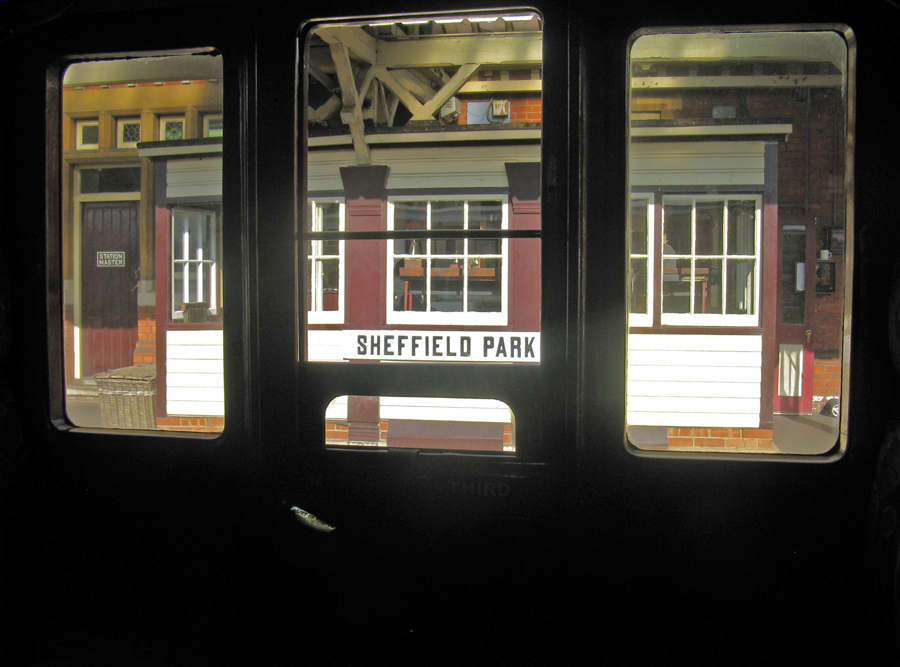 |
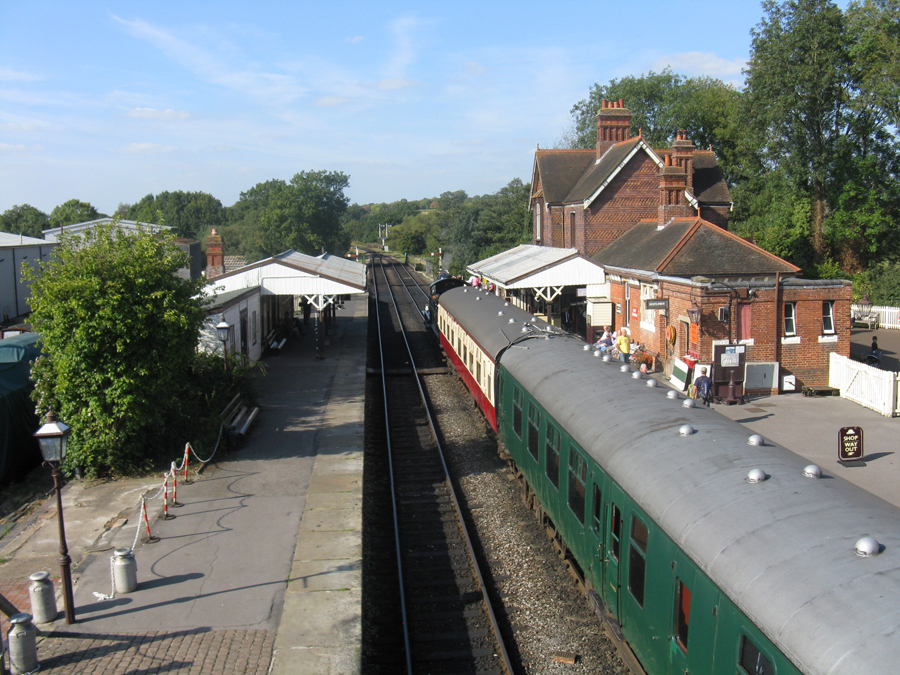 |
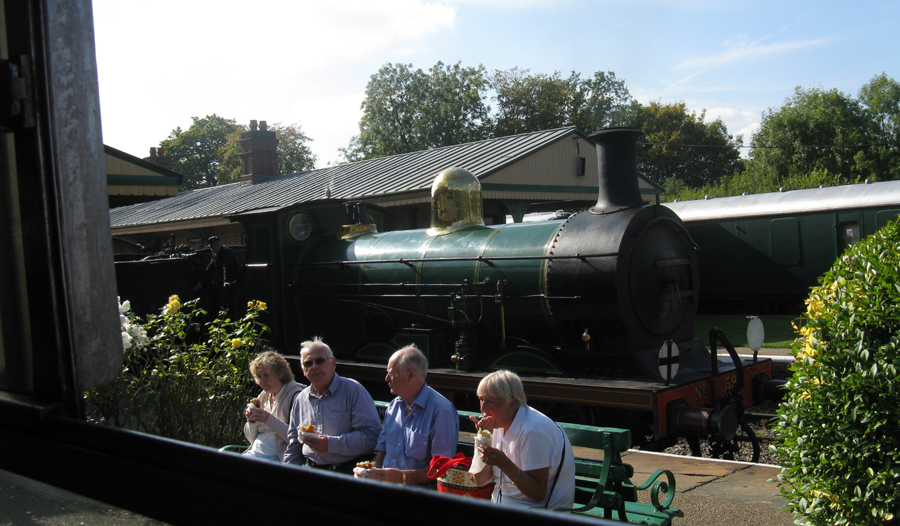 |
The interlocking plant at Sheffield Park.
|
 |
The Bluebells extensive collection of locomotives is housed at Sheffield
Park. |
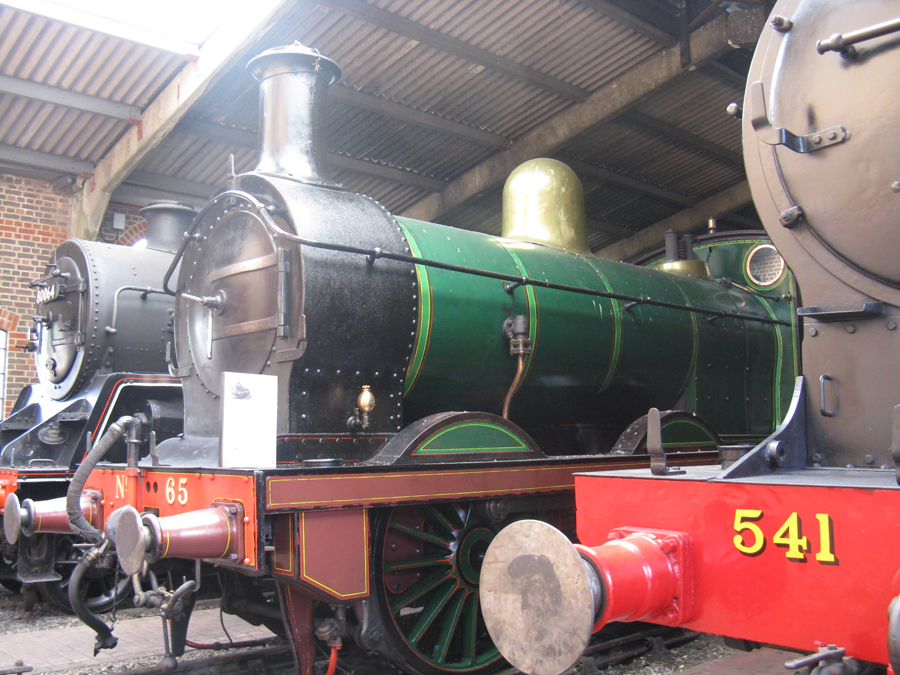 |
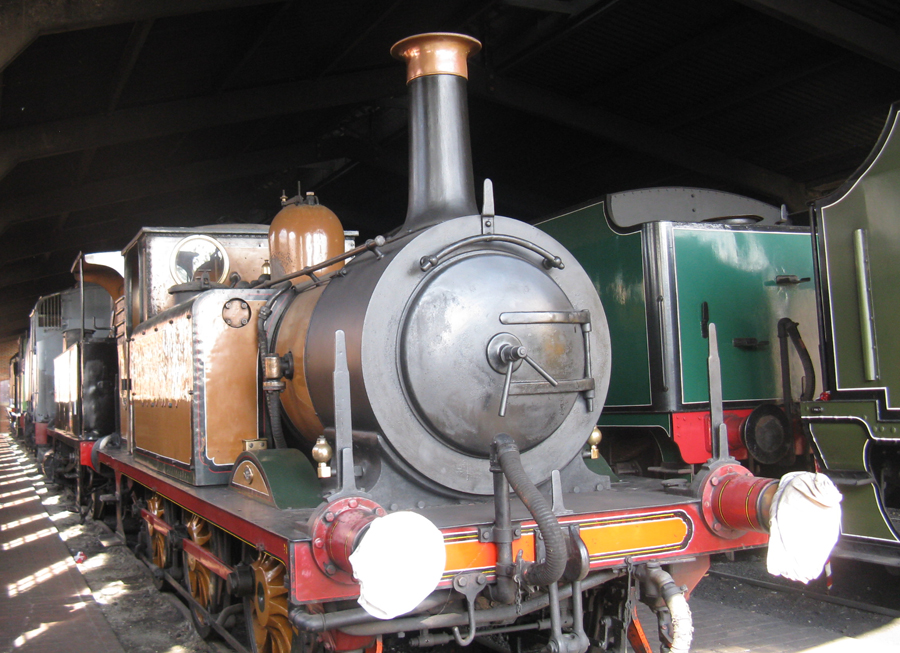 |
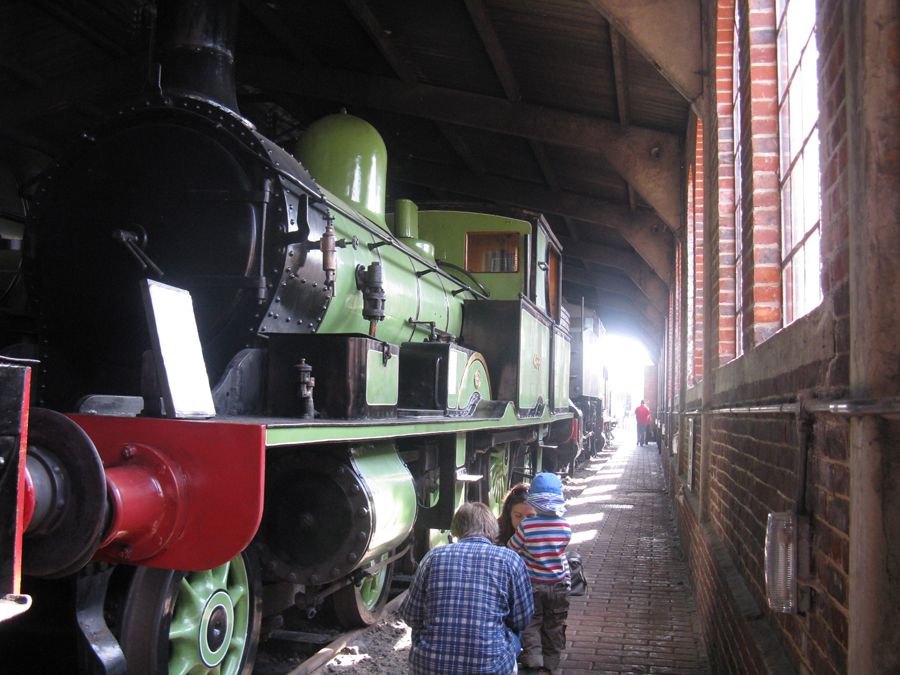 |
Some locomotives are on static display or undergoing restoration; others
like 9017 and Battle of Britain class Pacific 34059 are operational. |
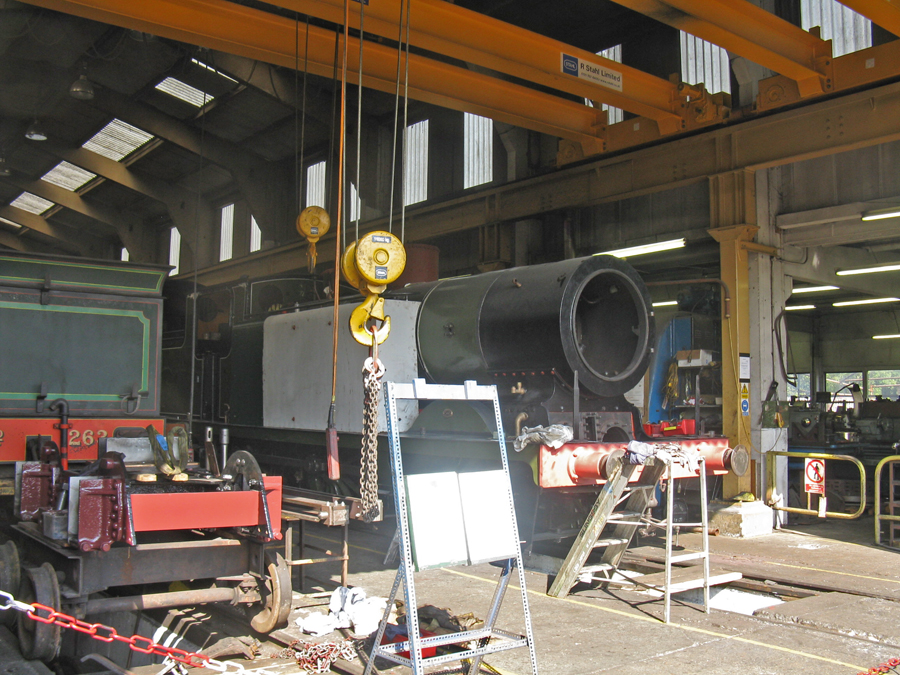 |
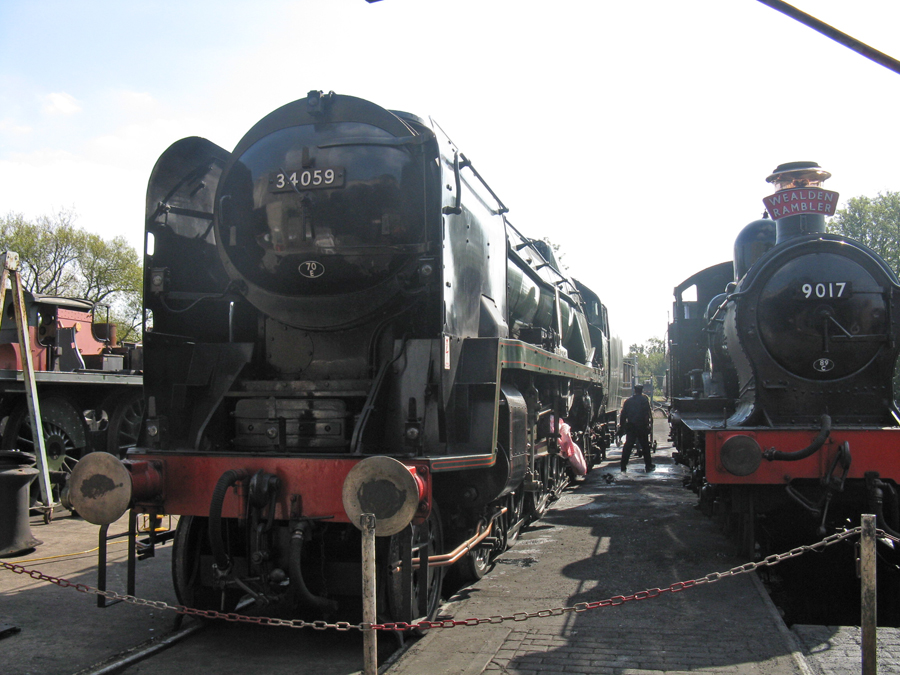 |
Also at Sheffield Park I saw the Pullman (parlor/lounge) cars used in
the Bluebells Golden Arrow weekend lunch and dinner service. |
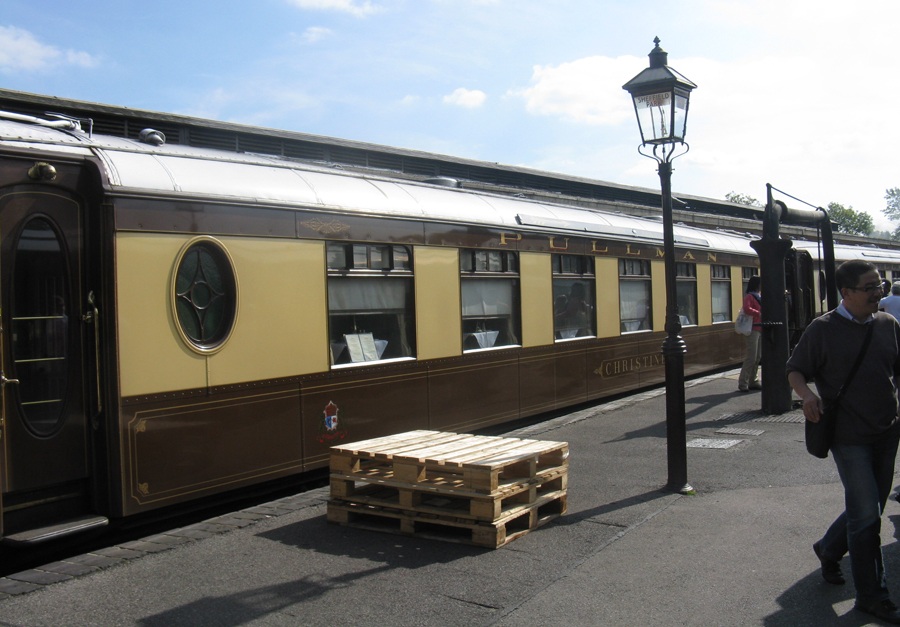 |
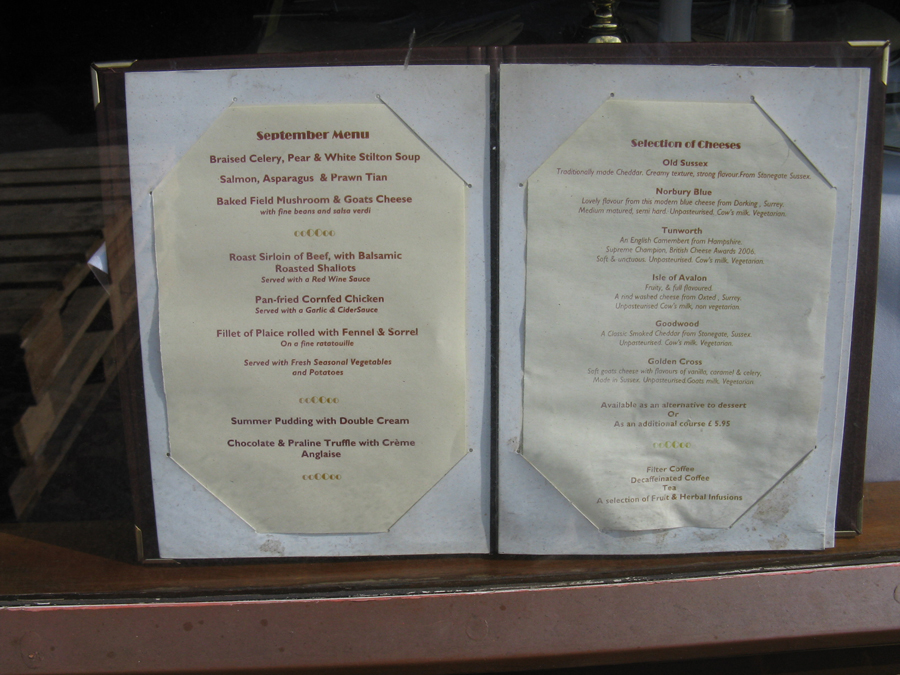 |
The second passenger train in regular service on Sept. 26 was pulled by Wainwright goods 0-6-0 #592, built in 1902. |
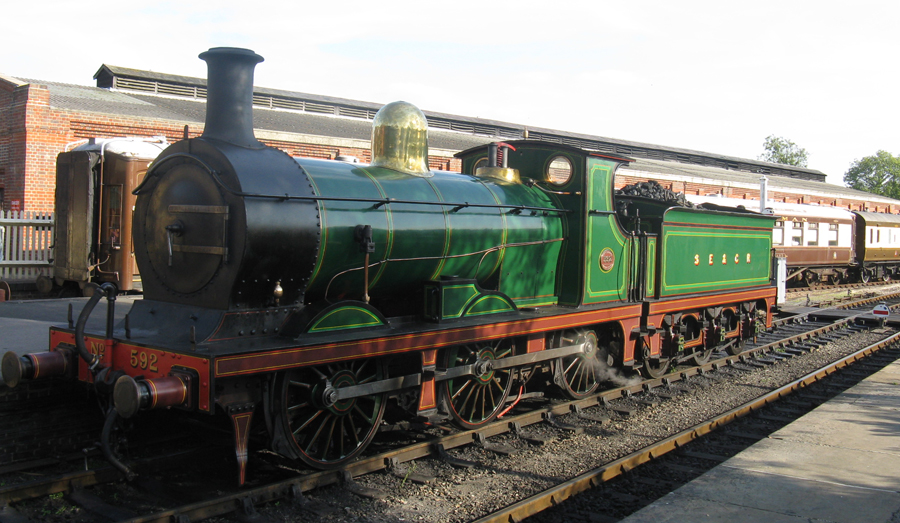 |
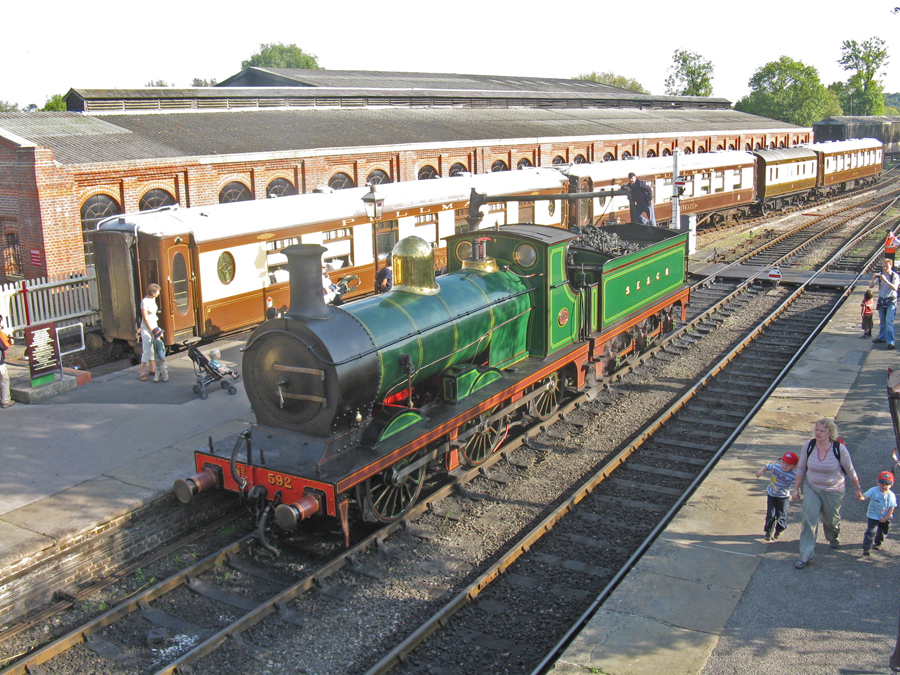 |
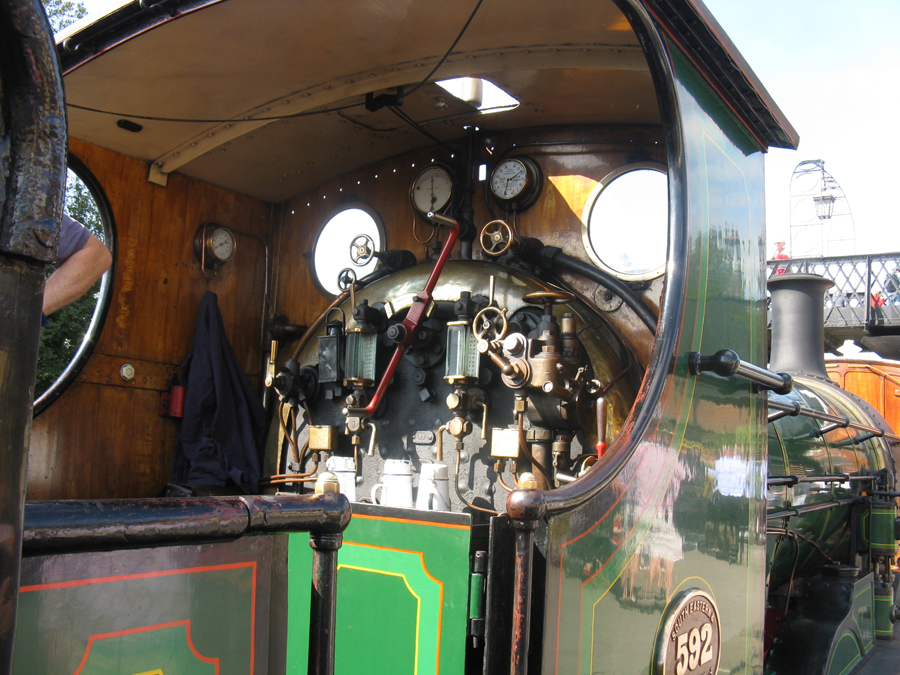 |
The train was made up of beautifully restored varnished wood cars from
about 1900, formerly operated on the London Metropolitan Railway (rapid
transit system). |
 |
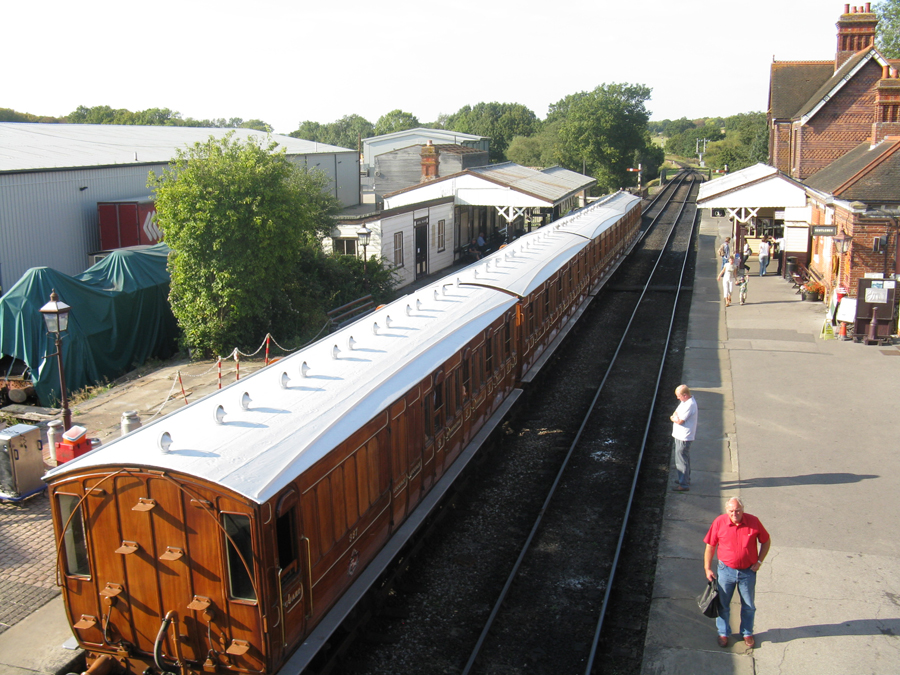 |
The cars had individual outside-door compartments; one contained a sign
from WW II. |
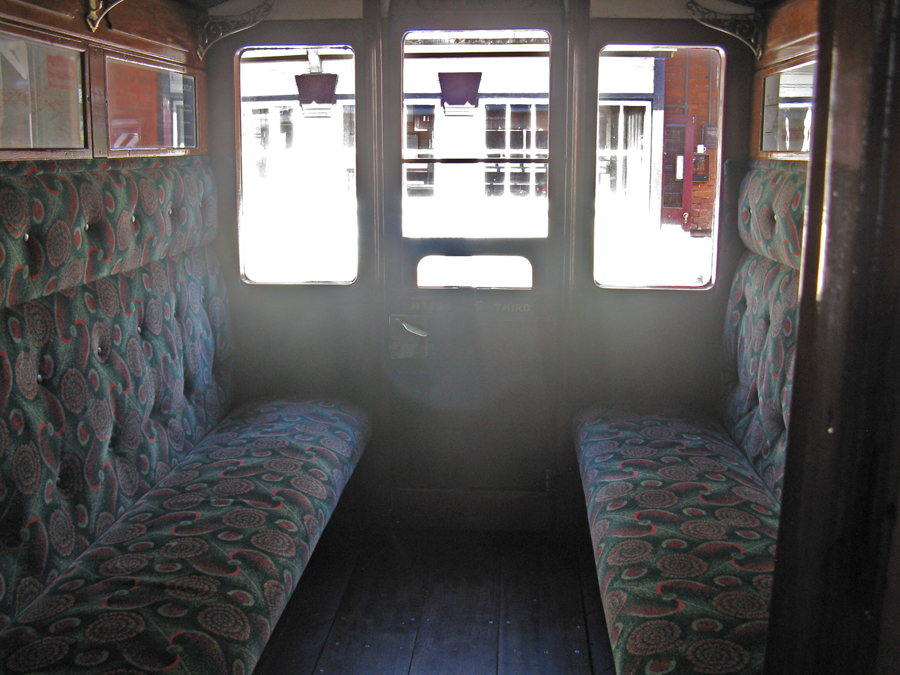 |
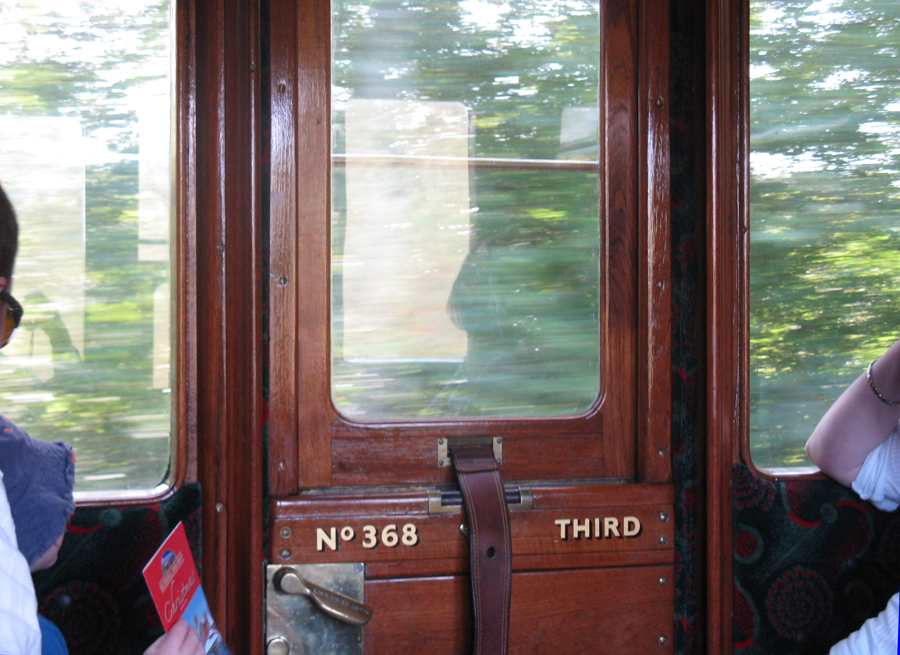 |
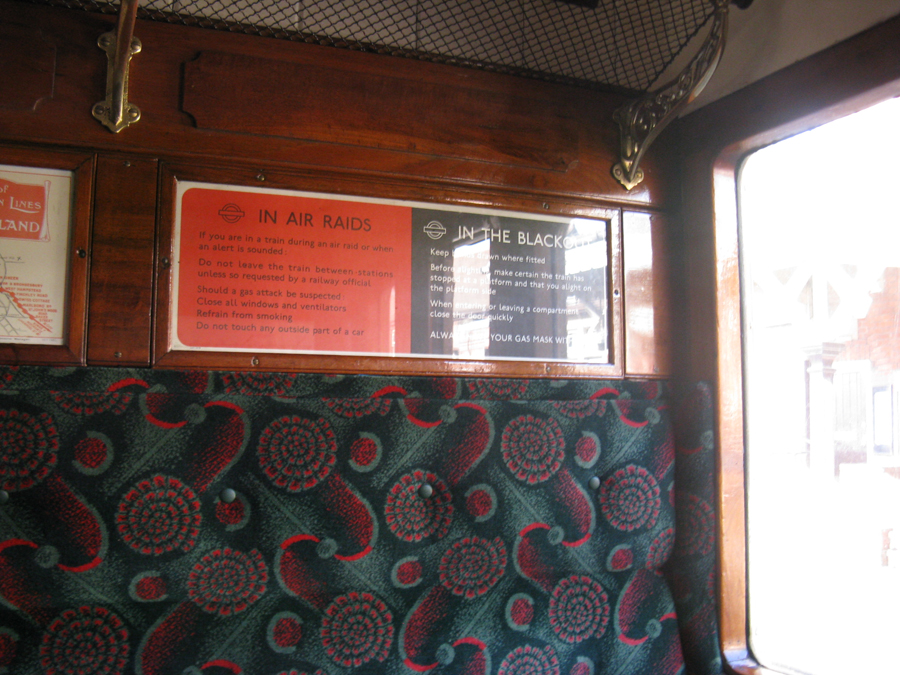 |
The third train in operation (which I did not ride) was a Grandparents
Tea Train with two elegant dining/lounge cars and a center
kitchen/service car. |
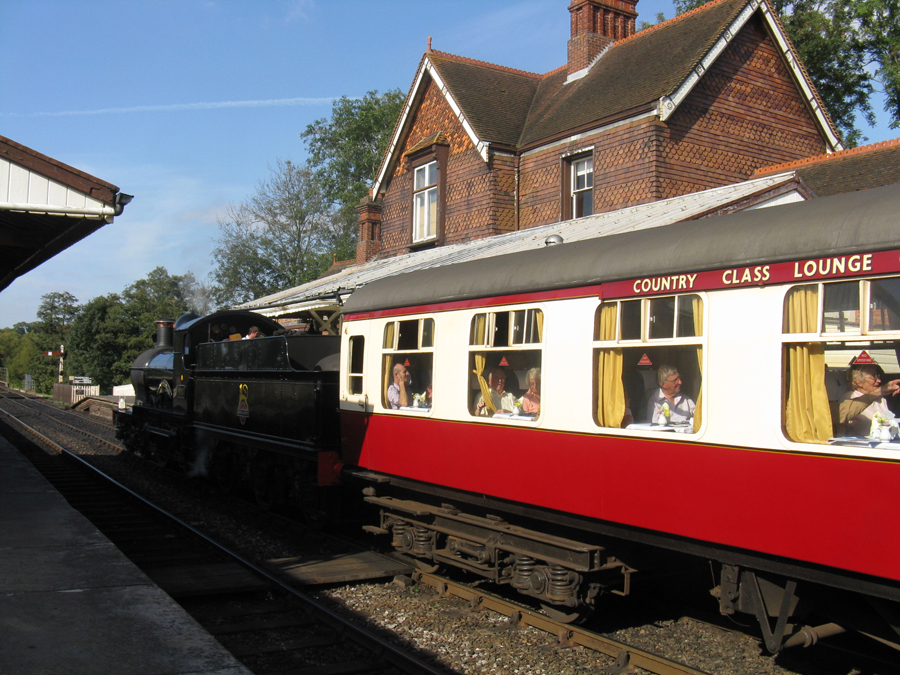 |
 |
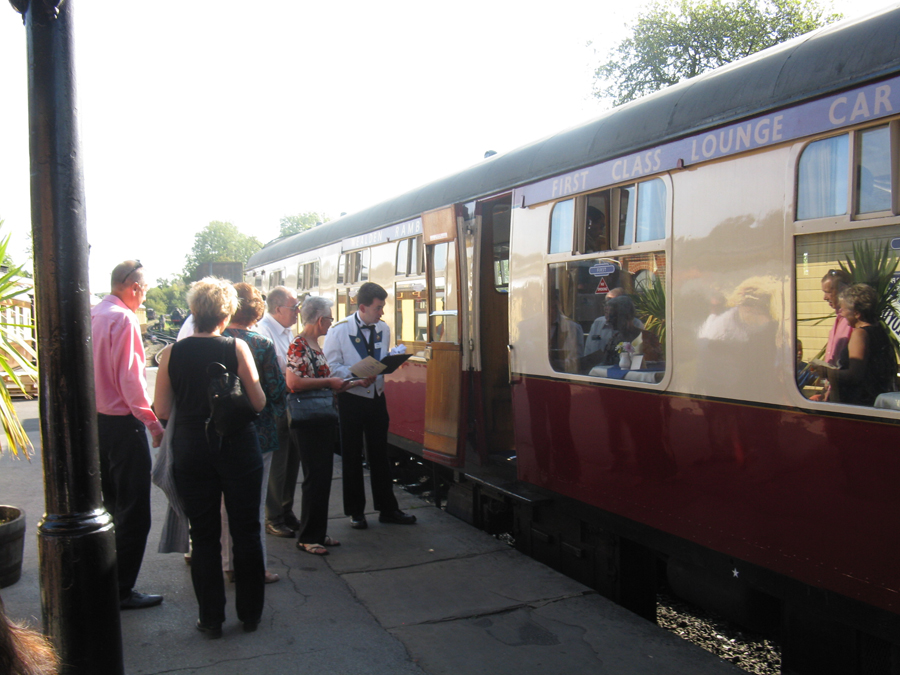 |
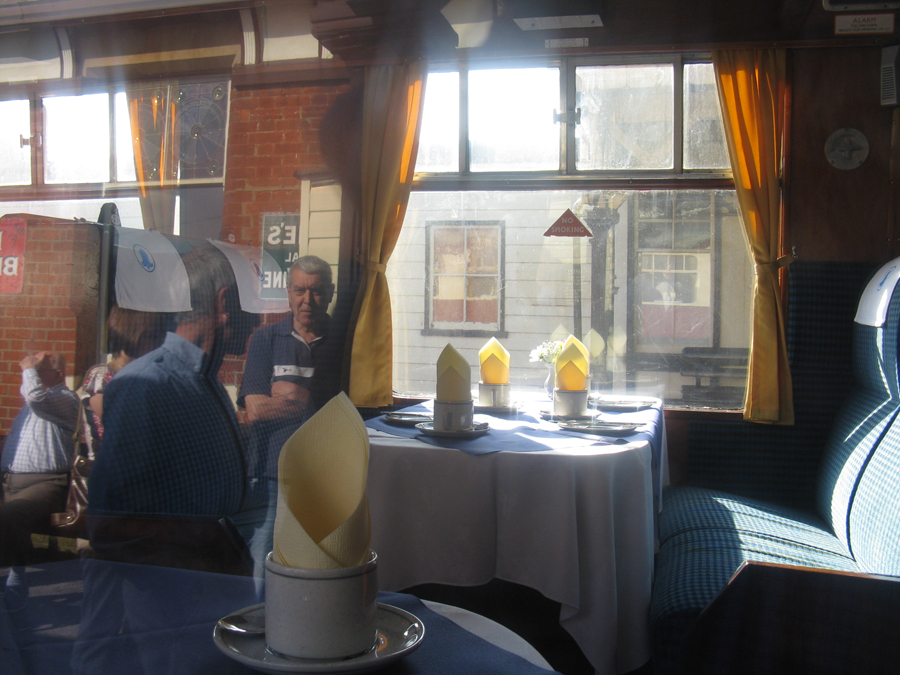 |
| This train was pulled by the most fascinating locomotive that I saw in steam on the Bluebell: inside-cylinder 4-4-0 9017, Earl of Berkeley. |
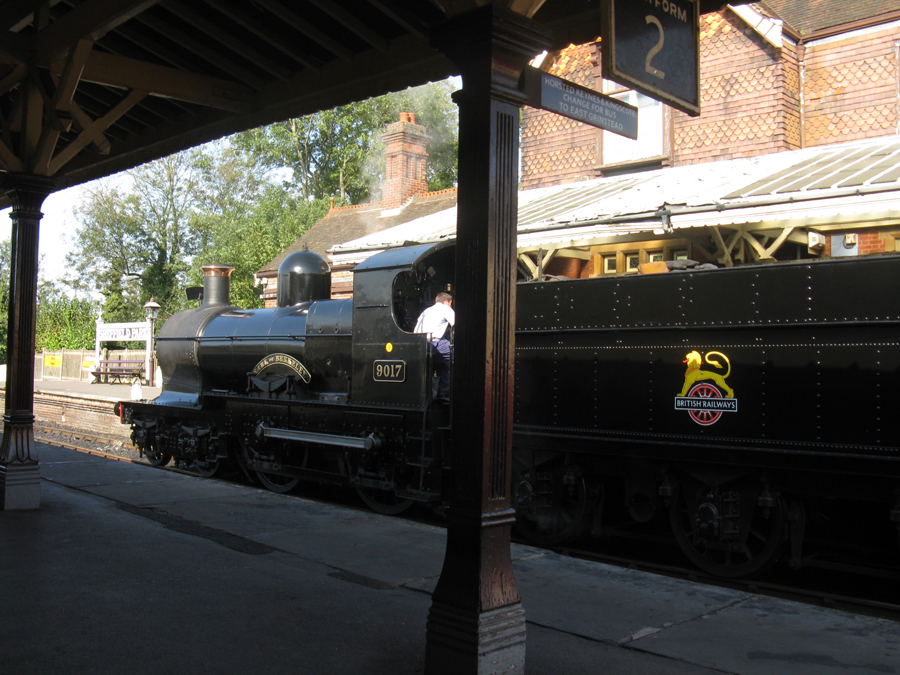 |
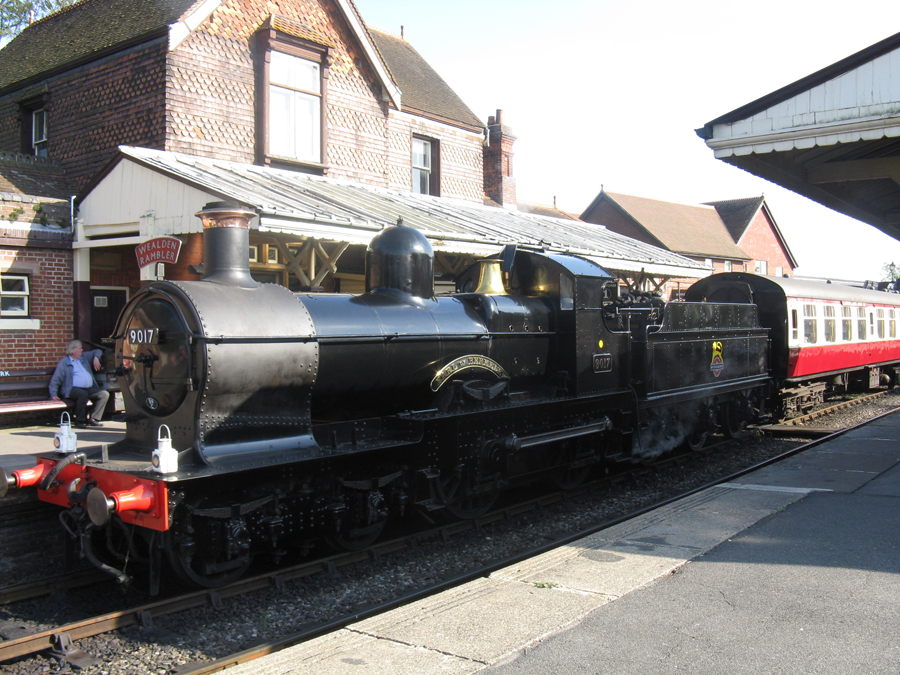 |
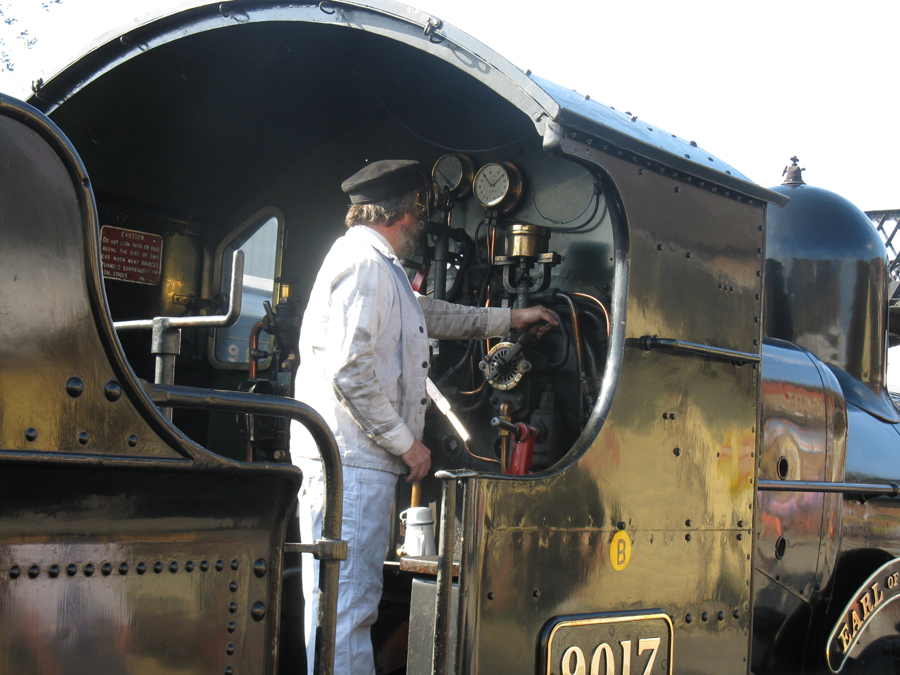 |
| The locomotive has a complex history, as described on the Bluebell homepage: Nicknamed Dukedogs since they were an amalgamation a Bulldog and a Duke, the parts of this loco are thus actually older than the building date suggests. The 1938 rebuild of 3217 used the frames from Bulldog No.3425 (built in 1906) and boiler and cab from Duke class No.3282 (built in 1899). |
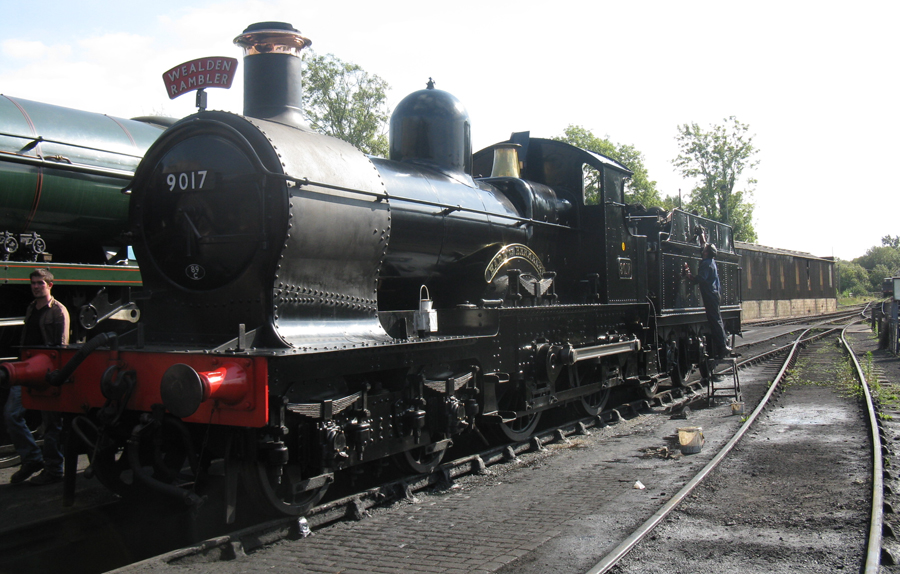 |
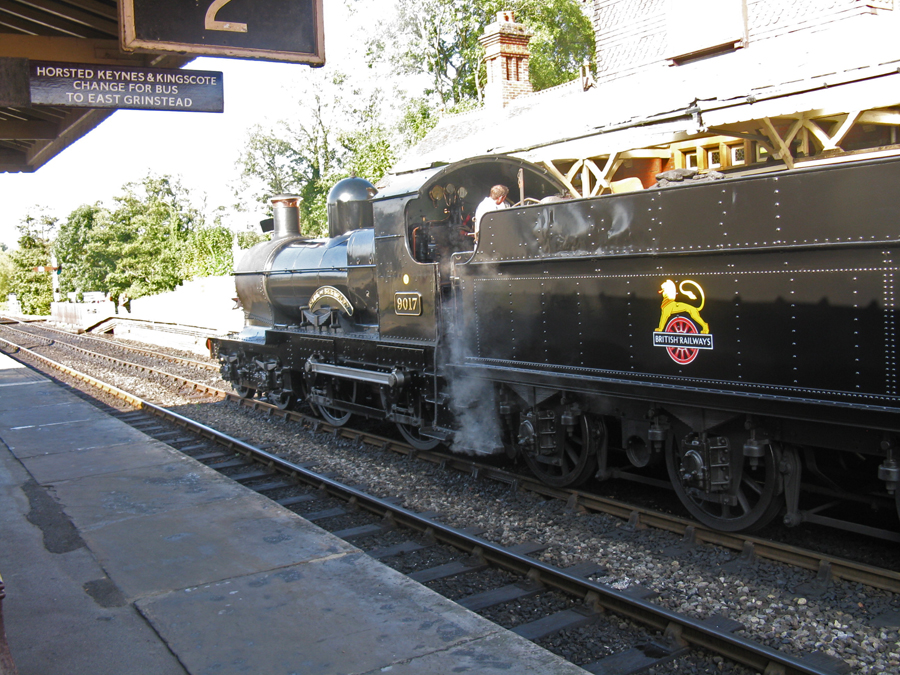 |
After the departure of the Tea Train I took the last train back to
Kingscote and a return to London after one of the most satisfying days
Ive ever spent on a steam tourist line. |
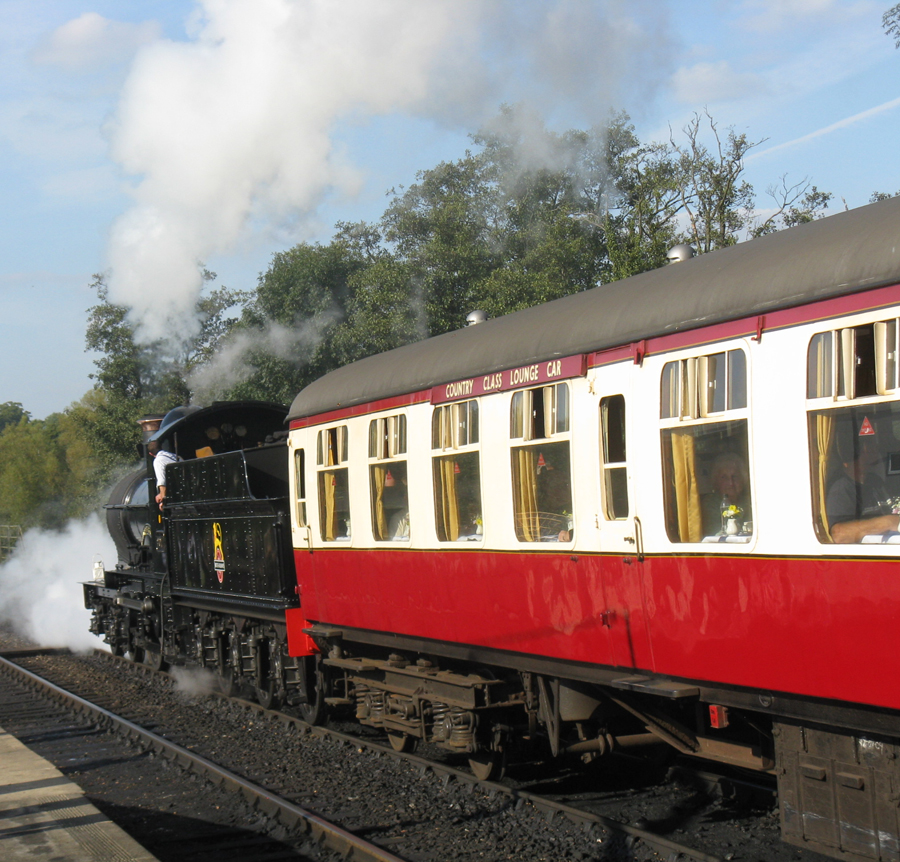 |
 |
This page was designed and is maintained by Mike Condren.
If you have materials
that you would like to contribute, contact me at mcondren@cbu.edu